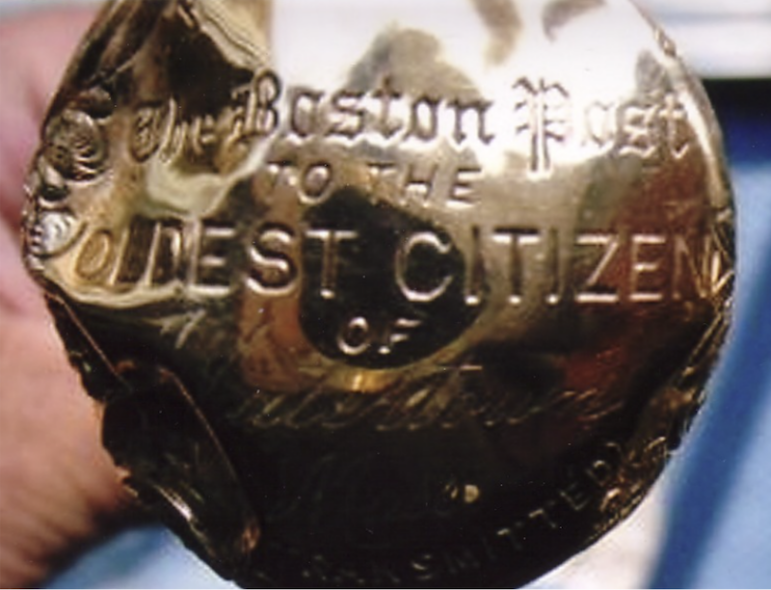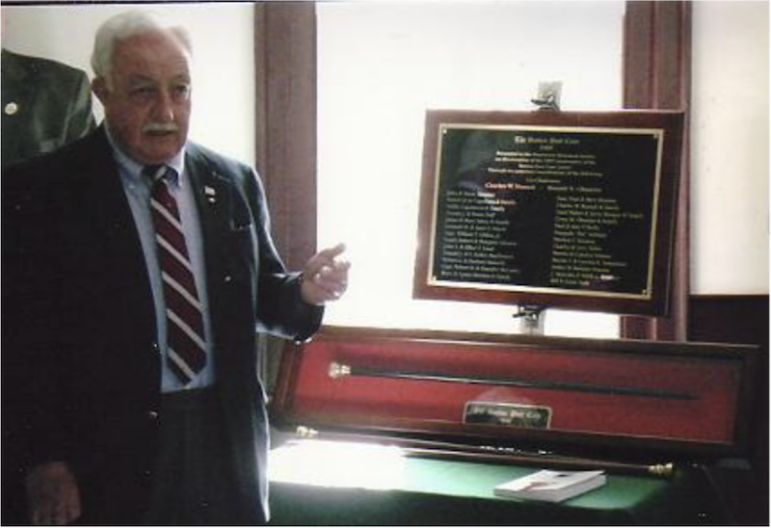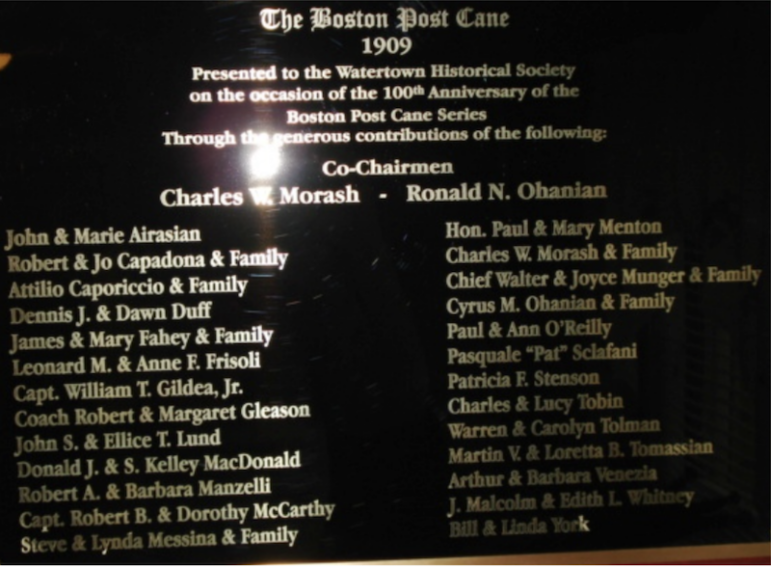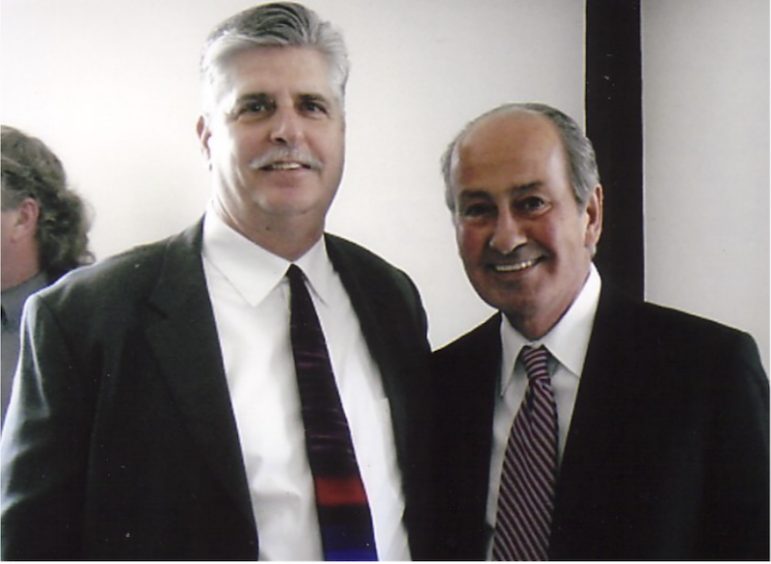
This article is part of a series on local history provided by the Historical Society of Watertown. It was written by Joyce Kelly, Board member of the Historical Society of Watertown. Joyce writes articles for the newsletter and is the newsletter editor. This was published in our July 2009 newsletter, “The Town Crier.”
1909 BOSTON POST CANE RETURNS TO WATERTOWN
In 1909, the Boston Post newspaper began a highly successful marketing scheme. They began presenting canes made of African ebony with 14-karat gold heads to the oldest man in 700 different towns in New England. The head of the cane was engraved with the town’s name.
The idea was that, upon the death of the first recipient, the cane would be passed down to the next oldest man in town, and so on, so it would always be in the possession of the oldest man in town. Women finally became eligible in the 1930s, with the Boston Post’s approval, after they received the right to vote.
Watertown’s Tribune-Enterprise ran an article on October 15, 1909 announcing that “One of Watertown’s oldest citizens, Edward F. Porter, was honored … by the presentation of a gold cane by the staff of the Boston Post at a special meeting of the board of selectmen. Mr. Porter, who is in his 90th year, has always been prominent in town affairs. He was for a long time a member of the board of selectmen, and has held other positions of great responsibility … As a boy he recalls driving Daniel Webster from his father’s home at Scituate to the statesman’s home at Marshfield. He was later Boston’s representative at the funeral services of Lincoln. Mrs. Porter, who is a year older than her husband, is living and in good health.”
We aren’t sure what happened to the Boston Post Cane when Mr. Porter died in March of 1910. Many towns lost track of the canes. Upon the death of the recipient, heirs were often not aware of the location of the cane, or didn’t realize the cane was to be returned and passed on to the next oldest citizen.
According to an article written by Christopher Klein in the Boston Globe Magazine this spring, canes have been sold at estate sales, burned and stolen. One is suspected to have been buried with the recipient. Canes have turned up in dumpsters, closets, attics and even a town vault. Last year, Watertown’s cane ended up with a Delaware antiques dealer. The antiques dealer contacted both the Historical Society and the Historical Commission announcing his discovery and looking for a buyer. Neither organization had the $800 to purchase it, which is the amount he was looking for at the time. But, Marilynne Roach, who is on the Board of both organizations, notified
Chris Helms, editor of the TAB who agreed to run an article about the cane. Both organizations hoped it would generate attention and an interested party who could come up with the money.

That interested party was Charlie Morash. Mr. Morash, a longtime Watertown resident, had been on a quest for the cane for 20 years. He stopped in antiques shops everywhere he traveled, hoping he would come across it. He said he was shocked when he saw in the TAB that it was for sale in Delaware. He contacted the dealer and learned that the price was now up to $1,600.
Morash, a past president of the Rotary Club, considered seeking that organization’s help in raising funds to purchase the cane. After speaking with his friend, Ron Ohanian, they decided on another idea. They approached some of the long-time Watertown families about donating $100 each to help bring the Boston Post Cane back home. They were successful.

In addition to raising enough funds to buy the cane and a red felt-lined display case to house it, Morash and Ohanian raised enough to purchase a plaque listing all of the donors names as well as two replica canes that can be given out to the oldest man and woman in Watertown. The original cane will stay in the display case.
During a April 29 ceremony at the Edmund Fowle House, the Boston Post Cane was presented to the Historical Society along with the plaque, the replica canes, and an autographed copy of the book The Bay State’s Boston Post Canes by Barbara Staples. Ms. Staples has written three books on the Canes and was present at the ceremony along with many of the donors and members of their families.

The cane and the donor plaque are now displayed on the wall in the Visitor’s Center of the Edmund Fowle House and Museum. The Historical Society and the Historical Commission are working on a plan to present the replica canes to the oldest man and woman in town this year – the 100th anniversary of the Post Cane.
Fabulous story about this hidden history of Watertown and Massachusetts. Wonder how the newspaper came u with 700 towns.
This story is very fitting and timely as there is an open house at the Edmund Fowle House at 28 Marshall St. today, April 30, from 1 to 4 p.m. It would be nice to see the infamous cane and so many more new artifacts that have never been viewed by the public! This is the 250 Year Anniversary of the Fowle House.
My mother is 106.
Thank you